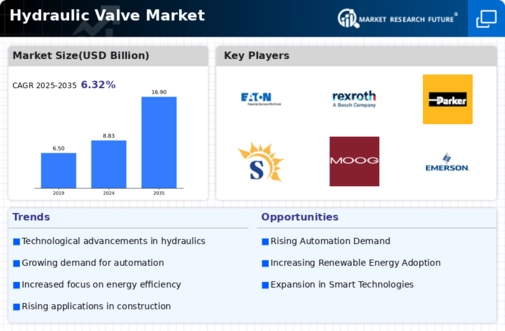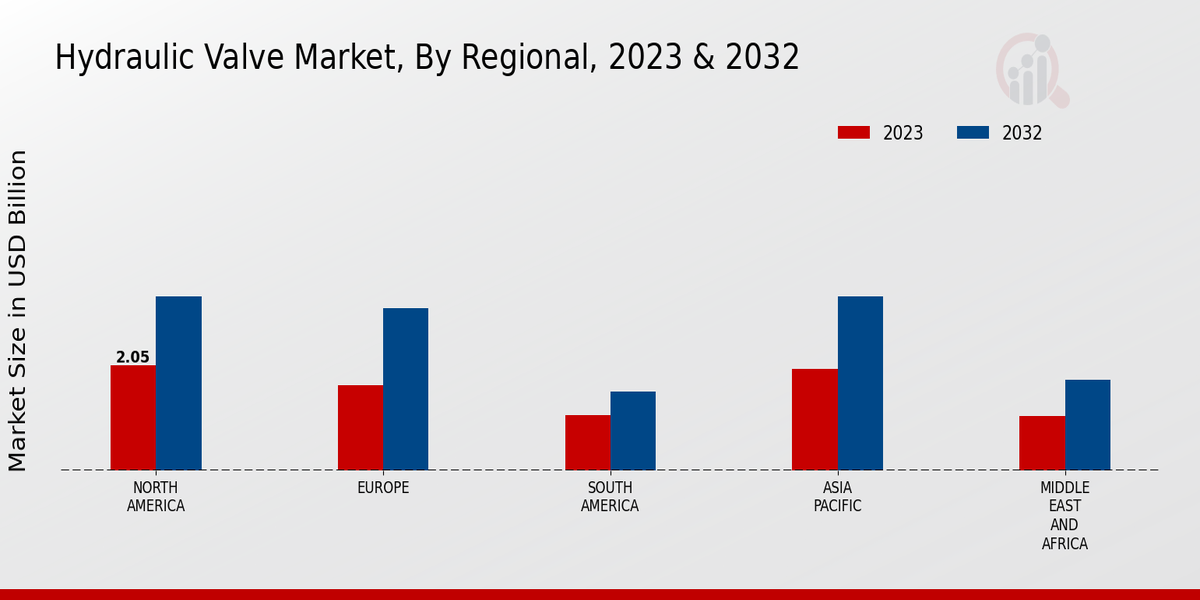Expansion of Emerging Markets
Emerging markets are becoming pivotal in the Global Hydraulic Valve Market Industry, as rapid industrialization and urbanization create new opportunities. Countries in Asia-Pacific and Latin America are investing heavily in infrastructure and manufacturing, leading to an increased demand for hydraulic systems. This trend is expected to contribute to the overall market growth, with projections indicating a significant rise in market value by 2035. The expansion in these regions not only supports local economies but also enhances the global supply chain for hydraulic components, thereby fostering a more interconnected market.
Growing Environmental Regulations
The Global Hydraulic Valve Market Industry is also shaped by increasing environmental regulations that mandate the use of eco-friendly hydraulic systems. As industries face pressure to reduce their carbon footprint, there is a shift towards hydraulic valves that minimize leakage and enhance energy efficiency. This transition is particularly evident in sectors such as waste management and renewable energy, where compliance with stringent environmental standards is critical. Consequently, the demand for advanced hydraulic solutions that meet these regulations is likely to drive market growth, reflecting a broader commitment to sustainability.
Infrastructure Development Initiatives
Government initiatives aimed at infrastructure development globally are propelling the Global Hydraulic Valve Market Industry forward. Investments in transportation, energy, and water management systems necessitate advanced hydraulic systems, which rely heavily on hydraulic valves. For instance, the construction of new highways, bridges, and renewable energy projects requires efficient hydraulic solutions. This trend is likely to bolster the market, with projections indicating a growth to 16.9 USD Billion by 2035. Such infrastructure projects not only enhance public services but also stimulate demand for hydraulic components.
Rising Demand in Industrial Automation
The Global Hydraulic Valve Market Industry is experiencing a surge in demand driven by the increasing adoption of industrial automation across various sectors. Industries such as manufacturing, oil and gas, and construction are integrating hydraulic systems to enhance operational efficiency and productivity. This trend is expected to contribute significantly to the market, with the industry projected to reach 8.83 USD Billion in 2024. As companies strive for automation, the need for reliable hydraulic valves becomes paramount, indicating a robust growth trajectory for the industry.
Technological Advancements in Hydraulic Systems
Technological innovations in hydraulic systems are significantly influencing the Global Hydraulic Valve Market Industry. The introduction of smart hydraulic valves equipped with IoT capabilities allows for real-time monitoring and control, enhancing system efficiency and reducing downtime. These advancements are particularly relevant in sectors like agriculture and manufacturing, where precision and reliability are crucial. As the industry evolves, the integration of these technologies is expected to drive market growth, aligning with the projected CAGR of 6.06% from 2025 to 2035, thereby indicating a promising future for hydraulic valve applications.
























Leave a Comment